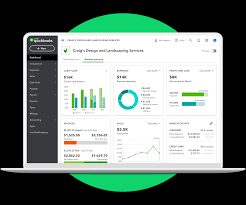Notifications
ALL BUSINESS
COMIDA
DIRECTORIES
ENTERTAINMENT
FINER THINGS
HEALTH
MARKETPLACE
MEMBER's ONLY
MONEY MATTER$
MOTIVATIONAL
NEWS & WEATHER
TECHNOLOGIA
TV NETWORKS
VIDEOS
VOTE USA 2026/2028
INVESTOR RELATIONS
COMING 2026 / 2027
ALL BUSINESS
COMIDA
DIRECTORIES
ENTERTAINMENT
FINER THINGS
HEALTH
MARKETPLACE
MEMBER's ONLY
MONEY MATTER$
MOTIVATIONAL
NEWS & WEATHER
TECHNOLOGIA
TV NETWORKS
VIDEOS
VOTE USA 2026/2028
INVESTOR RELATIONS
COMING 2026 / 2027
 Juliya Maartin -
5 hours ago -
Business -
Finance
Business
accounting
QuickBooks
Quickbooks Suppoet
-
0 views -
0 Comments -
0 Likes -
0 Reviews
Juliya Maartin -
5 hours ago -
Business -
Finance
Business
accounting
QuickBooks
Quickbooks Suppoet
-
0 views -
0 Comments -
0 Likes -
0 Reviews

A balanced balance sheet is crucial for accurate financial reporting. But what if you open your report in QuickBooks and notice your balance sheet is out of balance — meaning total assets do not equal total liabilities and equity?
This issue can be both confusing and alarming, especially if you're preparing for taxes, audits, or investor reviews. In this guide, we’ll walk you through what causes a QuickBooks balance sheet out of balance and how to identify and fix the problem step-by-step.
Is your QuickBooks balance sheet out of balance? Learn why it happens and how to fix it fast. Call +1-866-409-5111 for expert help.
Read This Blog: quickbooks save as pdf not working
In accounting, a balance sheet must always satisfy the formula:
Assets = Liabilities + Equity
If these totals do not match in your QuickBooks balance sheet report, your data has likely become corrupted or contains erroneous transactions. This is referred to as being "out of balance."
Here are the most frequent reasons for an out-of-balance balance sheet in QuickBooks:
Corrupted transactions – Data damage in company files can affect calculations.
Incorrect journal entries – Manual entries that bypass double-entry rules.
Multi-currency issues – Foreign currency miscalculations or rounding errors.
Condensed or damaged files – File reduction processes can cause data corruption.
Inventory or undeposited funds errors – Often related to account mismatches.
Identifying the cause is the first step toward resolving the issue.
Learn More: quickbooks database server manager
Let’s break down the troubleshooting process into manageable steps.
Step 1: Confirm the Date Range of the Problem
Open QuickBooks.
Go to Reports > Company & Financial > Balance Sheet Standard.
Set the date range to "All" or a custom period.
Compare the Total Assets with Total Liabilities and Equity.
If they don’t match, note the date when the discrepancy starts. This will help locate the problematic transaction(s).
Step 2: Use the Balance Sheet Summary Report
Go to Reports > Company & Financial > Balance Sheet Summary.
Run it for the same period as above.
If this version matches correctly, it suggests report formatting issues. But if it’s also out of balance, you’re likely facing data damage.
Step 3: Rebuild Data and Verify File Integrity
QuickBooks includes built-in tools to fix data corruption:
Go to File > Utilities > Rebuild Data.
Follow prompts to back up and repair the file.
Then go to File > Utilities > Verify Data to check for issues.
This process may identify damaged transactions causing the imbalance.
Step 4: Run the Balance Sheet by Year or Month
To find the specific date when the issue began:
Go to Reports > Custom Reports > Transaction Detail.
Filter by Account = All, and Transaction Type = Journal Entries.
Run the Balance Sheet report month by month or year by year.
Watch for the first time totals go out of balance.
This allows you to isolate the issue to a specific time period.
Step 5: Look for Problematic Transactions
Once you've identified the date range, look for these red flags:
Journal entries with only one side
Entries using the Inventory or Accounts Receivable account incorrectly
Transactions with unusual negative balances
Use of undeposited funds without matching bank deposits
Correct or delete suspicious entries only after backing up your file.
Step 6: Contact QuickBooks Support
If you've followed the steps above and still can't resolve the issue, it's time to contact professional help. You may be dealing with deeper file corruption that requires advanced tools or expert review.
Call +1-866-409-5111 for certified QuickBooks support and assistance with file repair or data recovery.
Avoid forced entries: Don’t create one-sided journal entries.
Use built-in functions: Avoid manipulating account balances manually.
Run regular file verifications to catch early signs of corruption.
Backup your file regularly to avoid data loss during repairs.
Avoid unsupported third-party tools that modify data structures.
Read More: quickbooks payroll service
Some users also find these built-in QuickBooks reports useful:
Trial Balance Report: Shows account balances for every GL account.
Audit Trail Report: Helps track who made what changes and when.
General Ledger: Dig into entries behind the numbers.
Compare these against your balance sheet to trace issues.
Final Thoughts
A QuickBooks balance sheet out of balance is not something to ignore. While it's often caused by minor data errors or misentries, it can also signal serious file damage that could affect the integrity of your entire financial record.
By following the steps above — from identifying the error date to rebuilding the data — you can usually resolve the issue yourself. If not, don’t hesitate to call +1-866-409-5111 and get expert help before the issue worsens.
